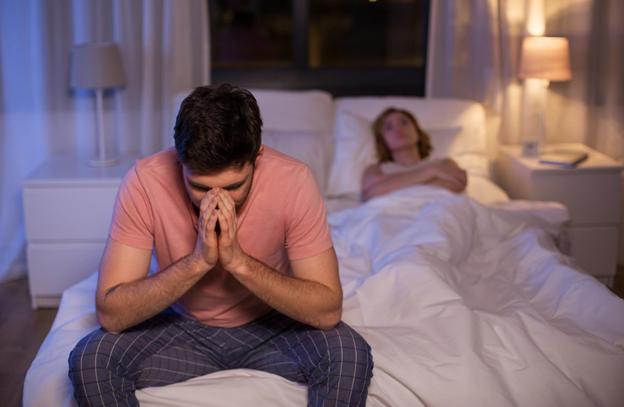Anorgasmia is the inability to achieve orgasm after ample sexual arousal. This condition can affect personal and relational well-being. By understanding anorgasmia better, we can find ways to manage its effects, promoting healthier intimate relationships. This guide will explain the symptoms, causes, and solutions for anorgasmia, providing helpful advice for anyone experiencing or wanting to understand it more.
Unpacking Anorgasmia: Types and Impact
The term anorgasmia refers to when someone cannot reach orgasm, even when they’re sexually aroused. It affects both the body and emotions deeply. There are different kinds of anorgasmia:
- Primary anorgasmia: This is when someone has never experienced orgasm.
- Secondary anorgasmia: This occurs after a person has previously had orgasms but is now unable to.
- Situational anorgasmia: When orgasms happen in certain situations but not others.
Understanding these types helps in recognizing the nature and depth of anorgasmia. Anorgasmia in women can sometimes have different aspects compared to men due to various biological and emotional factors. For women, anorgasmia might be linked to hormonal changes or emotional blockades, while men might experience it due to medical issues or stress. The impact of anorgasmia is diverse, affecting not just individual satisfaction but also partner relationships.
Spotting Anorgasmia: Signs and When to Seek Help
Detecting anorgasmia involves recognizing certain symptoms. These can include prolonged difficulty in achieving orgasm, even when sexually stimulated. If these symptoms persist, it is crucial to seek help from a healthcare provider or a therapist. Professional intervention should be considered when anorgasmia starts affecting emotional health and personal relationships. Early help not only improves personal well-being but also strengthens relationships by addressing underlying issues.
Decoding the Causes of Anorgasmia
Knowing the possible anorgasmia causes is essential for finding treatment. Psychological reasons play a big role, like stress, anxiety, and past traumas, which heavily influence the ability to achieve orgasm. Physically, hormonal imbalances can contribute to anorgasmia, especially in women. Medications also influence orgasmic ability, with some drugs having side effects that dampen sexual function. Relationship dynamics and lifestyle choices might have impacts as well. Unresolved conflicts, lack of intimacy, or unhealthy lifestyle habits can further contribute to this condition. Addressing these aspects can lead to improvement in sexual satisfaction.
Understanding the Diagnosis Process
Diagnosing anorgasmia involves a few important steps:
- Firstly, sharing a complete medical history with your doctor is crucial. This helps in understanding any underlying medical or psychological issues.
- Psychological evaluations might be necessary to detect any emotional barriers.
- Sometimes, doctors suggest medical tests to explore potential physical causes.
These steps ensure a holistic view, aiding in a tailored treatment plan that effectively addresses the root causes of anorgasmia.
Effective Treatments and Practical Approaches
There are several ways to treat anorgasmia effectively:
- Sex therapy and cognitive-behavioral therapy: These therapies target psychological factors by helping understand and remove emotional blocks tied to orgasm.
- Medical treatments: Hormonal therapies might be suggested when hormonal imbalances are detected. Reviewing medications can also help ease side effects that contribute to anorgasmia.
- Lifestyle changes: Simple changes, such as enhancing communication with partners and practicing stress management, can make a difference.
- Sexual techniques: Trying new sexual methods and experimenting with what feels pleasurable can also support better sexual experiences. This involves open conversations with partners about preferences and desires, fostering a more understanding and exciting sexual environment.
Collectively, these approaches not only offer solutions but also empower individuals to take control of their sexual health.
Navigating Intimacy: Coping Strategies for Individuals and Partners
Open and honest communication is necessary in managing anorgasmia within relationships. Practicing intimacy beyond the physical aspects, such as emotional bonding, enhances understanding between partners. Encouraging partners to explore alternative ways of connecting can create a nurturing environment. Focusing on emotional closeness rather than solely on orgasmic achievement fosters deeper relationship satisfaction.
Preventive Measures Against Anorgasmia
Preventing anorgasmia involves maintaining overall wellness. Here are some tips:
- Regular health check-ups can detect and address health issues early.
- Counseling can help in managing emotional well-being.
- Having supportive, healthy relationships acts as a buffer against sexual problems.
These practices support a balance that fosters long-term sexual health.
Conclusion and Key Takeaways
In conclusion, understanding anorgasmia helps tackle this sensitive issue head-on. Recovery is always a possibility, with numerous resources and professionals available to assist. Recognizing symptoms early and seeking help can improve both personal life and relationships. Embracing solutions, whether therapy, medical interventions, or lifestyle adjustments, enables individuals to rediscover sexual satisfaction. Remember, resources and effective solutions for managing anorgasmia are within reach, enabling a positive step forward in intimate relationships.

